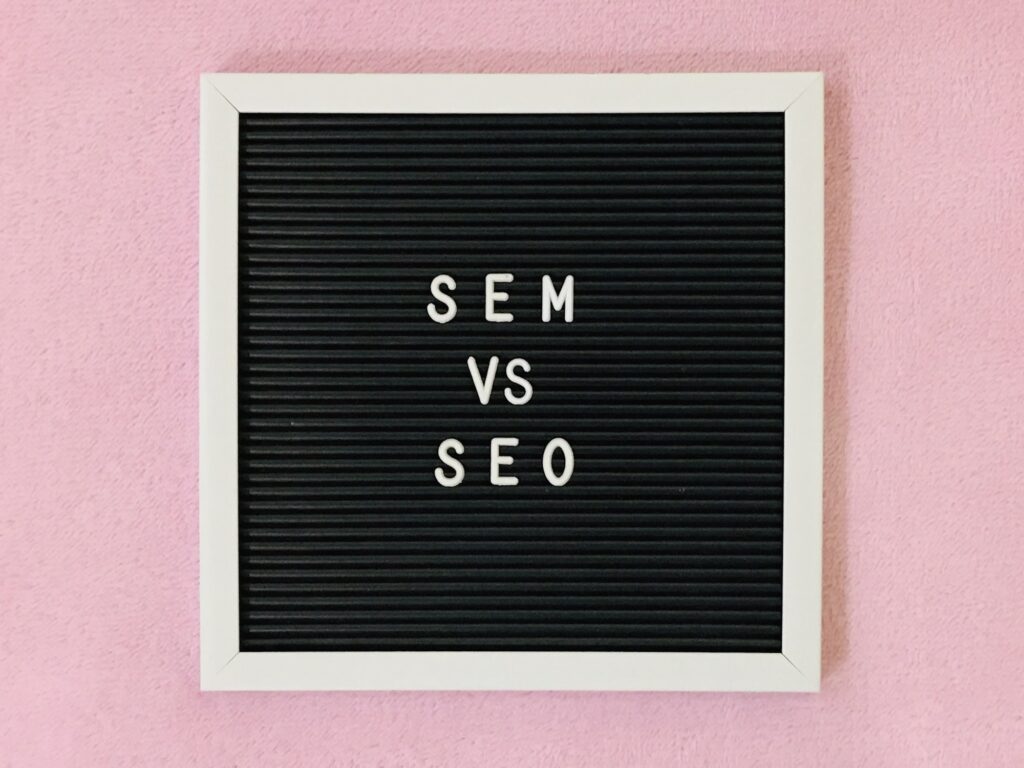In the world of digital marketing, two terms that often come up are Search Engine Optimization (SEO) and Search Engine Marketing (SEM). While these terms are sometimes used interchangeably, they actually refer to different strategies and tactics for driving traffic to your website. In this comprehensive guide, we will explore the main differences between SEM and SEO, delve into their respective features and strategies, and provide insights into how you can leverage both to maximize your online visibility and attract valuable traffic.
I. What is SEO and How Does it Work?
Search Engine Optimization (SEO) is a process focused on optimizing your website to improve its visibility in organic search results. The goal of SEO is to rank higher in search engine results pages (SERPs) for relevant keywords and attract organic traffic. SEO involves various techniques and practices to enhance your website’s on-page elements, off-page factors, technical aspects, and user experience. Let’s take a closer look at each of these components:
A. Keyword Research
Keyword research is a crucial step in SEO. It involves identifying the words and phrases that your target audience is using when searching for information or products related to your business. By conducting thorough keyword research, you can gain insights into popular search terms, search volume, and competition levels. This knowledge will help you optimize your website’s content, meta tags, URLs, and other on-page elements to align with the keywords that your potential customers are searching for.
B. On-Page SEO
On-page SEO refers to the optimization of various elements on your website to improve its visibility and relevance to search engines. This includes optimizing your title tags, meta descriptions, headings, URL structure, and content. By incorporating target keywords naturally and strategically throughout your website, you can signal to search engines what your website is about and increase your chances of ranking higher in SERPs.
C. Off-Page SEO
Off-page SEO focuses on building your website’s authority, reputation, and backlink profile. By acquiring high-quality backlinks from reputable websites, you can demonstrate to search engines that your website is trustworthy and relevant. Off-page SEO also involves social media engagement, influencer marketing, and other tactics to increase your website’s visibility and attract more organic traffic.
D. Technical SEO
Technical SEO involves optimizing the technical aspects of your website to ensure that search engines can crawl, index, and understand your content effectively. This includes improving website speed, mobile-friendliness, site architecture, URL structure, and XML sitemaps. By addressing technical SEO issues and providing a seamless user experience, you can enhance your website’s visibility in search results.
II. What is SEM and How Does it Work?
Search Engine Marketing (SEM) encompasses a broader range of strategies and tactics aimed at driving traffic to your website through both organic and paid search results. While SEO focuses on organic traffic, SEM combines SEO with pay-per-click (PPC) advertising to maximize visibility and attract targeted traffic. Here are the main components of SEM:
A. PPC Advertising
PPC advertising involves creating targeted ads and bidding on specific keywords to appear in the paid search results of search engines like Google. These ads typically appear at the top or bottom of the search results page and are marked as “sponsored” or “ad.” With PPC advertising, you only pay when someone clicks on your ad, making it a cost-effective way to drive traffic to your website. It is essential to conduct keyword research, create compelling ad copy, and optimize your landing pages to maximize the effectiveness of your PPC campaigns.
B. SEO Strategy
While PPC advertising is a major component of SEM, it is vital to have a solid SEO strategy in place to complement your paid efforts. SEO focuses on optimizing your website to improve its organic search rankings, attract more traffic, and establish long-term visibility. By incorporating SEO best practices into your overall SEM strategy, you can enhance the effectiveness of your paid campaigns and attract additional organic traffic.
III. The Key Differences Between SEO and SEM
Now that we have a better understanding of SEO and SEM, let’s dive deeper into the key differences between these two approaches:
IV. Developing an Effective SEM Strategy
To create a winning SEM strategy that combines the power of SEO and PPC, consider the following steps:
1. Set Clear Goals and Objectives
Define your marketing goals and objectives for your SEM campaigns. Are you looking to increase brand awareness, drive website traffic, or generate leads? Setting clear goals will help you align your SEM efforts and measure their effectiveness.
2. Perform Keyword Research
Conduct thorough keyword research to identify the most relevant and valuable keywords for your business. Use keyword research tools like Ahrefs Keywords Explorer to discover search volume, competition levels, and potential opportunities. This research will inform your SEO and PPC efforts.
3. Optimize Your Website for SEO
Implement SEO best practices on your website to improve its organic visibility and rankings. Optimize your website’s content, meta tags, URLs, and other on-page elements to align with target keywords. Focus on providing valuable, informative, and engaging content that meets the needs of your target audience.
4. Create Compelling PPC Campaigns
Develop compelling PPC campaigns that target specific keywords and audience segments. Craft engaging ad copy, select relevant landing pages, and set realistic budgets for your campaigns. Continuously monitor and optimize your PPC campaigns to improve their performance and maximize return on investment (ROI).
5. Track, Analyze, and Adjust
Implement tracking and analytics tools like Google Analytics and Google Ads to monitor the performance of your SEM campaigns. Track key metrics such as click-through rates (CTRs), conversion rates, and cost per acquisition (CPA). Analyze the data to identify areas for improvement and make data-driven adjustments to your campaigns.
6. Test and Experiment
Continuously test and experiment with different strategies, ad copy variations, landing pages, and targeting options. A/B test different elements of your PPC campaigns to optimize performance and identify what resonates best with your audience. Use the insights gained from testing to refine your SEM strategy over time.
V. The Future of SEM and SEO
As the digital landscape continues to evolve, SEM and SEO are also evolving to adapt to new trends and technologies. Here are some future directions to consider:
- User Experience (UX) and SEO: Search engines are increasingly prioritizing user experience as a ranking factor. Websites that provide a seamless, user-friendly experience are more likely to rank higher in search results. Focus on optimizing your website’s speed, mobile-friendliness, ease of navigation, and overall user experience to stay ahead in the SEO game.
- Mobile-First Indexing and AMP: Mobile search is on the rise, and search engines are prioritizing mobile-first indexing. Accelerated Mobile Pages (AMP) is an open-source initiative that enables the creation of fast-loading, mobile-friendly web pages. Implementing AMP can improve your website’s mobile performance and enhance its visibility in mobile search results.
- Artificial Intelligence (AI) and Personalization: AI technologies are becoming increasingly integrated into search engines and digital marketing strategies. AI-powered algorithms can analyze vast amounts of user data to deliver more personalized search results and targeted ads. Leverage AI and machine learning tools to gain insights into user behavior, preferences, and trends, and create more targeted, personalized SEM campaigns.
- Data-Driven Marketing: The future of SEM and SEO lies in data-driven decision-making. As more data becomes available, marketers can gain deeper insights into user behavior, preferences, and search patterns. Leverage data analytics tools to track and analyze key metrics, identify trends, and make informed decisions to optimize your SEM and SEO strategies.
- Privacy and User Trust: As privacy and data security concerns grow, users are becoming more conscious of how their data is being used. Ensure that your SEM and SEO strategies prioritize user privacy and comply with relevant data protection regulations. Building trust with your audience is crucial for long-term success in the digital landscape.
Understanding the differences between SEM and SEO is essential for developing a comprehensive digital marketing strategy. While SEO focuses on organic traffic and optimizing your website, SEM combines SEO with PPC advertising to drive targeted traffic from both organic and paid search results. By leveraging the power of both SEM and SEO, you can maximize your online visibility, attract valuable traffic, and achieve your marketing goals. Stay informed about the latest trends and developments in SEM and SEO to stay ahead of the competition and drive sustainable growth for your business.






